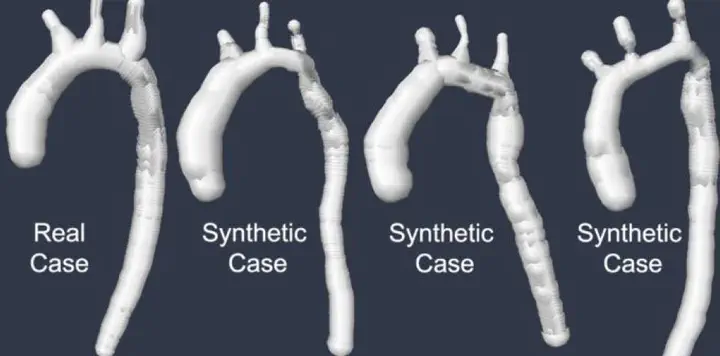Synthetic Database of Aortic Morphometry and Hemodynamics: Overcoming Medical Imaging Data Availability

Abstract
Modeling of hemodynamics and artificial intelligence have great potential to support clinical diagnosis and decision making. While hemodynamics modeling is extremely time- and resource-consuming, machine learning (ML) typically requires large training data that are often unavailable. The aim of this study was to develop and evaluate a novel methodology generating a large database of synthetic cases with characteristics similar to clinical cohorts of patients with coarctation of the aorta (CoA), a congenital heart disease associated with abnormal hemodynamics. Synthetic data allows use of ML approaches to investigate aortic morphometric pathology and its influence on hemodynamics. Magnetic resonance imaging data (154 patients as well as of healthy subjects) of aortic shape and flow were used to statistically characterize the clinical cohort. The methodology generating the synthetic cohort combined statistical shape modeling of aortic morphometry and aorta inlet flow fields and numerical flow simulations. Hierarchical clustering and non-linear regression analysis were successfully used to investigate the relationship between morphometry and hemodynamics and to demonstrate credibility of the synthetic cohort by comparison with a clinical cohort. A database of 2652 synthetic cases with realistic shape and hemodynamic properties was generated. Three shape clusters and respective differences in hemodynamics were identified. The novel model predicts the CoA pressure gradient with a root mean square error of 4.6 mmHg. In conclusion, synthetic data for anatomy and hemodynamics is a suitable means to address the lack of large datasets and provide a powerful basis for ML to gain new insights into cardiovascular diseases.